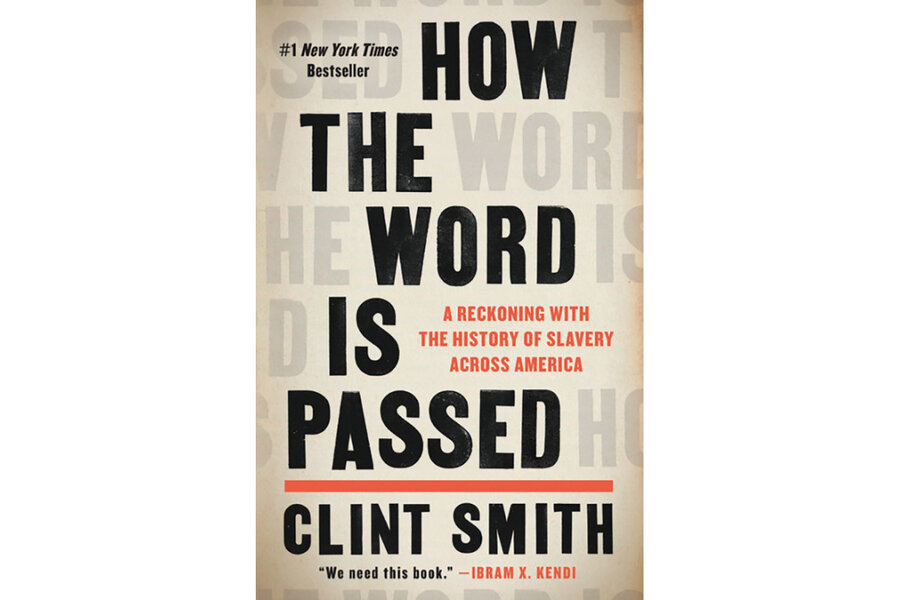‘How the Word Is Passed’: The stories we tell about race
Loading...
Poet and Atlantic staff writer Clint Smith, in his new book “How the Word Is Passed: A Reckoning with the History of Slavery Across America,” has created something subtle and extraordinary. In its pages are a combination of historical insight and personal discovery perhaps best described by a word from his own title: “reckoning.” The author, who is Black and grew up in New Orleans, visits several slavery-haunted sites in America. These include the sprawling, brutal Angola prison in Louisiana; the famous Whitney Plantation, also in Louisiana; and Thomas Jefferson’s property Monticello in Virginia.
At every point in Smith’s intensely personal story, his experience is woven with the larger social landscape in a way that feels simultaneously public and confessional. He directly tackles one of the twists of American racism that embroiled the country in the summer of 2020, noting that statues honoring Confederate slave owners are kept and maintained by US taxpayers.
In Smith’s hometown, New Orleans, there are dozens of streets, statues, parks, and schools named after those same Confederate slave owners. “For decades,” he points out, “Black children have walked into buildings named after people who thought of them as property.” One of his book’s most powerful moments occurs when he adds historical context to ordinary New Orleans street directions: “Go straight for two miles on Robert E. Lee,” he begins. “Translation: ‘Go straight for two miles on the general whose troops slaughtered hundreds of Black soldiers who were trying to surrender.’”
He draws a thought-provoking comparison when writing about Louisiana’s state penitentiary. Commonly called Angola Prison, the penitentiary is built on a former plantation, and thousands of Black men work in conditions that bear jarring resemblances to slavery. “If in Germany today there were a prison built on top of a former concentration camp,” he writes, “and that prison disproportionately incarcerated Jewish people, it would rightly provoke outrage throughout the world.” This is undeniably true, and it effectively illustrates the ingrained nature of American racial prejudice.
The problem with “How the Word Is Passed” – and it’s certainly a negotiable problem in light of the book’s generous array of strengths – is that Smith’s rhetoric sometimes moves from passionate to overblown. It’s a move that may cost him readers who would otherwise agree with him.
This move can take many forms. The epigraph for his chapter on Angola prison, for instance, is a quote from one of the prison’s assistant wardens, who tells Smith “I can’t change what happened here.” The author writes, “When I hear these deflections, I think of all the ways this country attempts to smother conversations about how its past has shaped its present. How slavery is made to sound as if it happened in a prehistoric age instead of only a few generations ago.” But is it entirely a deflection? Does the assistant warden’s comments about not being able to change the past make him – and by extension all other white people who make similar remarks – automatically racist? That's the implication here.
Similar assumptions seem to be at work when Smith, noting that some of the people who threw stones at Martin Luther King Jr. are still alive, observes that “the people who lynched a man in my grandfather’s town may have had children who inherited their parents’ hatred.” While racist behavior and prejudice often follow intergenerational lines, race hatred isn't inherited as if it were a genetic trait.
Then there’s the moment when Smith, visiting Monticello, asserts, “There is no story of Monticello – there is no story of Thomas Jefferson – without understanding Sally Hemings.”
Smith's all-or-nothing reductionism of Jefferson's role to that of a slaveowner is no more palatable than it would be for a white writer to assess a Black leader by a single attribute or description.
Despite such occasional overreaches, “How the Word Is Passed” is a harrowing journey through historical landmarks. How many Americans have visited the places Smith discusses, or even heard the kind of deflective patter their tour guides so often produce? How many of those Americans have spared a thought for the wrongs soaked into the soil of those places?
“So much of the story we tell about history is really the story that we tell about ourselves,” Smith writes. “How the Word Is Passed” exists in the precarious intersection of these two narratives, challenging readers to join it there. It’s a challenging text, but ultimately, perhaps, a hopeful one.






